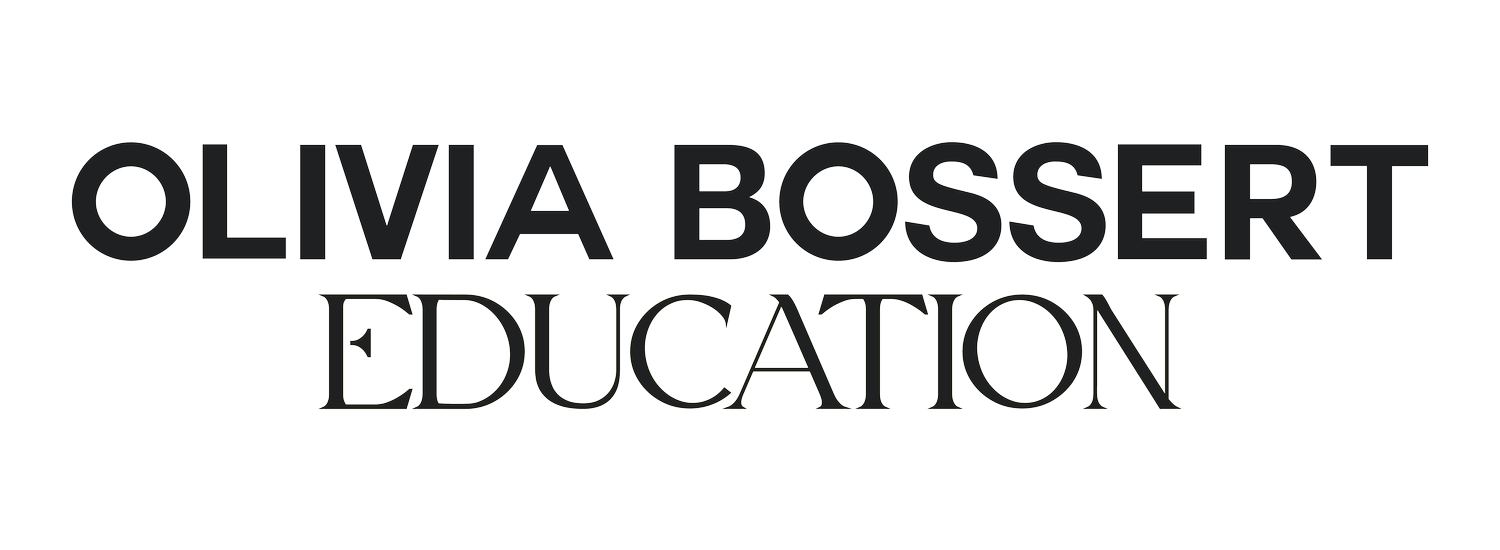How to shoot for a fashion magazine (even if you’ve never been published).
If you're a photographer, stylist, or creative dreaming of getting your work published in fashion magazines — this post is for you.
We often see beautifully curated editorials in Vogue, Harper’s Bazaar, or L’Officiel and wonder, how did that team land this feature? It can feel like there’s a secret club of creatives who “just know” how to get published — but here’s the good news: there is a process, and you can learn it.
In this guide, I’m going to walk you through exactly how to go from idea to publication, even if you’ve never pitched before. Whether you’re working on your first submission or aiming to build long-term relationships with magazines, this is your roadmap.
Let’s dive in.
Why Getting Published in Magazines Still Matters
In a world of Instagram likes and TikTok views, you might be asking — is getting published still worth it?
The answer is: absolutely. But how you use a publication matters more than ever.
Here’s why I still encourage creatives to shoot for magazines:
Social proof & credibility: When you get published, especially in respected publications, it acts as a stamp of approval. It shows potential clients and agencies that your work is professional and publishable.
Portfolio development: Editorial shoots are one of the best ways to create the kind of work you want to be hired for. It gives you permission to be creative, bold, and concept-driven.
Networking & exposure: Editorial projects often bring together talented creatives. That networking is invaluable — many of my long-term collaborators came from test shoots or magazine work.
Marketing gold: You can use published work across your website, social platforms, press kits, and client pitches. It’s an asset that works for you long after the shoot is done.
So no, editorial work isn’t always paid — but it can pay off massively in your career. You just need to be strategic.
Understanding the Two Types of Magazine Work
Before we talk about proposals or pitching, it’s important to understand that not all magazine shoots work the same way. There are generally two types of fashion editorial opportunities:
1. Submission Shoots
These are self-funded, self-directed shoots that you create before pitching to a magazine. You put together the concept, assemble the team, and create the final images. Then, once the shoot is complete, you submit it to publications for consideration.
This is how most photographers start out. It gives you complete creative control and allows you to build your editorial portfolio on your own terms.
2. Commissioned Editorials
These are shoots that the magazine asks you to create, usually based on a concept or story they’re already planning. These may come with a budget (though not always), and the magazine will likely want final approval over the concept, casting, and styling.
These kinds of opportunities usually come after you’ve proven yourself with strong submissions or agency-backed work.
So if you’re just starting out, don’t wait to be asked — get out there and create something worth publishing.
Planning Your Editorial: What Goes into a Strong Proposal
If you want to pitch your shoot before you start shooting — for example, to get a magazine on board early — then a solid editorial proposal is your best friend.
Here’s what I recommend including:
✔️ Your Editorial Proposal Should Include:
A working title or theme: Something evocative that hints at the mood of the shoot.
One paragraph concept: This is your “elevator pitch.” One clear paragraph that describes the idea, the tone, and what makes it unique.
Mood board or visual references: Use inspiration images to communicate the aesthetic — think of this like a mini lookbook.
Casting info: Who you’ll be shooting. If you don’t have final models confirmed, describe the type of look or agency you’re aiming for.
Location details: Studio, natural light, outdoor location, or specific venue? Include this.
Lighting style: Optional, but helpful — especially if lighting is key to the concept.
Production notes: Will you need a set designer? Are there props involved? Mention anything that will affect the logistics.
Pro tip: Don’t overcomplicate this. Editors are busy, so keep your proposal visual, skimmable, and well-designed.
You can create your proposal in a beautiful PDF, or host it on your website and send a direct link. I personally prefer the second option — it looks more professional and avoids email spam filters.
When Should You Pitch Your Editorial?
Timing is everything when it comes to magazine pitching. One of the biggest mistakes I see creatives make is pitching seasonal stories at the wrong time.
Magazines work several months ahead. That means:
In June, they’re planning Fall
In August, they’re finalising Winter
In November, they’re looking toward Spring
This is why I created my Pitching Calendar — a Notion dashboard that tells you exactly what themes, moods, and seasons to pitch each month. (It’s just £9 — link in bio if you want it.)
You don’t need to chase trends constantly, but aligning your editorial concept with the magazine’s editorial calendar is key to getting a “yes.”
Budgeting for Editorial Shoots (Without Going Broke)
Let’s be real: most editorial shoots are not funded — especially when you’re starting out. But that doesn’t mean they have to be expensive.
I’ve shot some of my most successful editorials — including one published in Harper’s Bazaar Malaysia — in my living room. With zero budget.
Here are some ways to keep costs low:
Work with emerging talent who are also building portfolios.
Use natural light or simple studio setups.
Shoot local and avoid complex travel or location fees.
Keep styling elevated but minimal — think key pieces, not full collections.
When Should You Ask for Budget?
If you're working on a commission and the magazine is interested in your idea, then you can bring up costs. Don’t mention it in your initial pitch. Wait until they express interest, then say something like:
“To bring this concept to life, we’ll need around £X in budget for production and styling. Would that be possible?”
With time and a proven track record, budget conversations become easier.
How to Pitch Your Editorial (and Who to Pitch It To)
Once your proposal is ready, it’s time to pitch. But who do you pitch to?
Most fashion magazines have a Submissions Editor, Fashion Editor, or Editorial Coordinator listed on their masthead or website. You can also use LinkedIn to find the right contact.
Your email should be short, warm, and professional.
Sample Pitch Email:
Hi [Editor’s Name],
I hope you're well! I'm a fashion photographer based in [City], and I wanted to share a concept I’m developing that I think could be a great fit for [Magazine Name].
The editorial is called “[Title]” — a modern take on [brief description of concept]. You can view the full proposal here: [insert link]
Let me know if you think this could be a fit. I'd love to discuss next steps or tailor it to your upcoming issues.
Best,
[Your Name]
[Website/Instagram]
Common Mistakes to Avoid
Don’t pay to be published. Real publications do not charge creatives to feature work.
Don’t overexplain. Keep your proposal and pitch short and visual.
Don’t pitch to magazines that don’t fit your aesthetic. Do your research. Align your visual style with their brand.
Final Thoughts: Don’t Wait to Be Discovered
So many talented creatives hold back from pitching because they think they’re not ready. But here’s the truth:
You don’t need an agent, a celebrity client, or 50,000 followers to shoot for a magazine.
You need a strong idea, a clear proposal, and the courage to put your work out there.
Every photographer I know who shoots for top publications started by pitching — not waiting to be asked.
So take your concept, build your team, and shoot with intention. Because you’re not just creating content — you’re building your reputation, one editorial at a time.
Ready to Pitch with Confidence?
Grab my Pitching Calendar for just £9 — a Notion dashboard that shows you exactly what to pitch each month, what themes are trending, and how to stay ahead of the editorial curve.
You’ve got this. Don’t wait to be discovered — go be undeniable.

